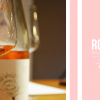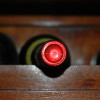The world of the wine is a captivating and complex one, which many times leads to our appreciated consumer taking distance. It’s time to simplify its understanding so you, that don’t consume more or better wines because of ignorance, can get out of your comfort zone and take the risk to buy a new brand or region or an unknown varietal.
How is wine made?
Wine is nothing less than juice of grape that has been fermented, fully or partially.
Imagine that you are walking through a friend’s vineyard and you are tempted to grab some bunches of grapes. If you put those clusters on a clean container like a bucket or a stainless steel cooking pot and you rip the grains with your arms you will see the next day and the ones that follow that the grape juice in contact with its skin will start to ferment.
The alcoholic fermentation is the transformation of the sugar in the alcohol through the yeast.
The yeast is found on the skin of the grape and, after being put into contact with the sweet juice, the job starts.
But resist the temptation of doing your own wine, it’s just not easy at all to obtain a tasty wine. It´s required much more knowledge obtained on the university and/or the cellar
What can you add to the wine?
Absolutely nothing, wine is solely the product resulting on the fermentation of fresh grapes.
But if smells like chocolate or strawberry, doesn’t that those products or scents were added? The answer is no.
The aromas of the wine come from three origins:
• Primary aromas: These are the own aromas of the grape. They are aromatic molecules which are shared with others fruits or vegetables. Because of that for example, a Torrontes can remind us to a lemon or a pomelo and a Cabernet Sauvignon to a green pepper
• Secondary aromas: These are the ones generated during fermentation. When the yeast works over the sugar, they also modify certain aromatic molecules through complex chemical processes that are not worth knowing to enjoy a good wine. Examples of this aromas are for examplearomas of dairy or bread products like a brioche bread.
• Tertiary aromas: are the ones that come from the evolution of the wine because of its aging on barrel or bottle. This scents are denominated Bouquet and they are usually notes of cedar, chocolate, balsamics and even to nuts or dry leaves.
The wine has more than 1000 aromatics components which are combined and allow its olfaction smelling like something we recognize.
It’s possible to make white wine with red grapes? And the other way round?
Yes, it is possible to make white wine from the red grapes, since the color is in its skin and not in its pulp.
If we are quick enough to separate the skin from the pulp, this one will not be stain and so we will get a white wine.
On the contrary, the other way is impossible, there is no way of elaborating red wine from white grapes. Where would we get the color from?.
What is the difference between a varietal wine and a blend?
A varietal wine is the one that shows the varietal in it front label, for example Chardonnay or Malbec. That means (at least in Argentina) that at least 85% of the wine is elaborated with the grapes of the mentionated varietal.
Otherwise it would be a blend. A blend or assamblage is a mixture of varietals in a way that none of them can reach the 85%. The classical argentinian blends are Malbec- Cabernet Sauvignon or Chardonnay- Viognier.
It’s somehow a blasphemy to add soda to the wine?
Absolutely not, you must drink wine as you like the most. If you like it with soda, why not?
And if you like more cold than suggested or not so cold. It’s your decision, it’s your palate who decides.
Don’t get scared with weird terminology nor try to comprehend it all at once. The wine is a food to enjoy like you do with a blue cheese that you don´t know which milk was used to elaborate it, with which mushroom was fermented or how much time of aging has.
The same thing you can do with the wine; and meanwhile dare to ask what you wish to know.
Source: Winifera



